Kigali, and Rwanda in general, is much more developed than Tanzania. We enjoyed walking on sidewalks, eating in cafes, driving on paved roads, etc.

Downtown Kigali

Club sandwich!
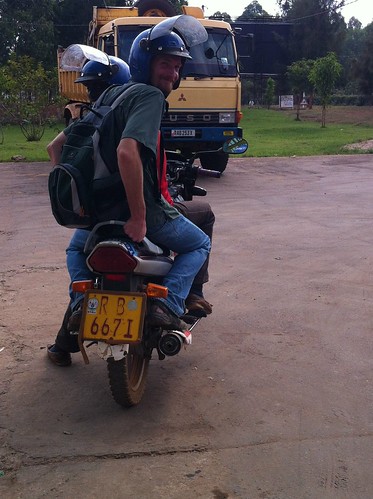
A common mode of transport. They were MUCH more cautious drivers than in TZ.

Though, there are still parts of the city that resemble Tanzania.
During the week we were in Rwanda, Chris and I visited 3 different genocide memorial sites, as well as the Kigali Memorial Center. There's no way for me to adequately capture the feeling of visiting these places. It's unspeakable the brutality that humans can commit against fellow humans. Yet we continue to do it, time and time again, even to this day. I commend the Rwandans for the work they seem to have done and continue to do to promote peaceful conflict resolution and healing from the 1994 genocide against the Tutsis, and for their work to remember the atrocity and commemorate those who were victims.
If you're squeamish and don't want to look at pictures of the genocide memorials or hear the atrocious stories of what happened, then skip this post and I'll do another one later with the more uplifting part of the trip. However, I feel like it's important to tell the stories so that more people know the truth of what happened here. Also because the international community did very little to help prevent, mitigate and respond to the genocide against the Tutsis, I feel we have a special responsibility to know more.
This church in Ntarama was the site of the murder of approximately 5000 people, including children.
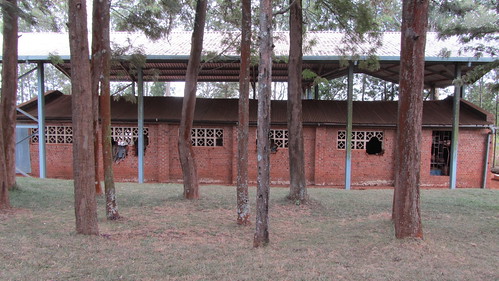
This is the main church. The holes in the walls were from where grenade were thrown.
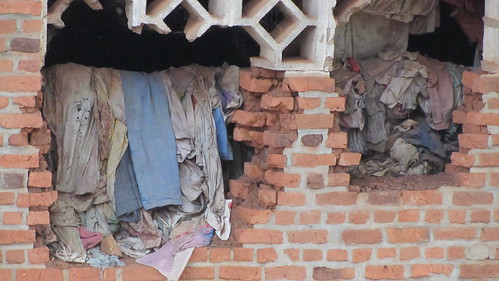
The clothes and personal belongings of the people who were killed here are still housed inside the church. It's obvious that people did not know they were going to be killed because they brought food and other personal items to sustain them for a long period of time.
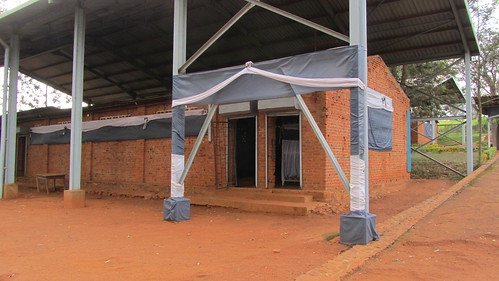
Shelves of skulls can be seen inside this doorway of the church.
In the back of the compound at this site there is another smaller building that was once used as the children's classroom. Inside there is a wall with dried blood on it where children were taken by the feet and their heads were smashed into the wall to kill them. Horrible.
Chris and I also visited a church in Nyamata, however, we didn't take any pictures here. Approximately 2,500 people died in the compound of that church, a large number of them women, who were also raped. The alter still has blood on it and there are holes all over the ceiling and walls where bullets were unloaded to kill those inside the building.
Later in our trip, Dad, Holly, Chris and I visited Murambi Memorial Site, which was a vocational school under construction at the time of the genocide. An astonishing 27,000 people were murdered here. This site is situated in a beautiful valley surrounded by hills. It's quiet and serene but also a perfect trap for people who could be viewed by the hills that surround the school on all sides. This site also serves as a reminder of how the Catholic Church played a horrible role in contributing to the genocide. A local bishop and the mayor encouraged people to come to this school and told the people they would be safe. Unfortunately, it was just a trick to get them to one concentrated place so they could be killed more easily.

There are 24 rooms full of mummified bodies. We only go through 2 or 3 rooms before we had had enough.

The bodies were thrown into mass graves and there was some sort of reaction that caused them to be preserved.
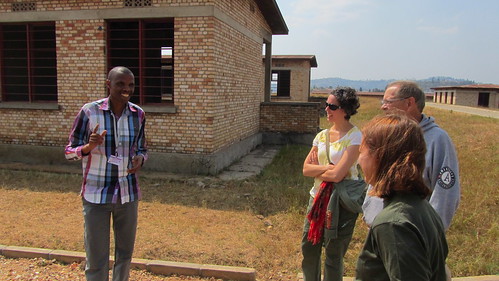 *
*Our guide was a survivor himself, having lost both his parents and all his siblings but one brother. According to the guide, French soldiers built mass graves for the bodies here, covered them up and then played volleyball on top to cover up the grave. Again, horrible.
The Kigali Genocide Memorial is a very well done and touching museum that details the build up to and events that happened during the genocide against the Tutsis in 1994 as well as commemorates those who were lost.
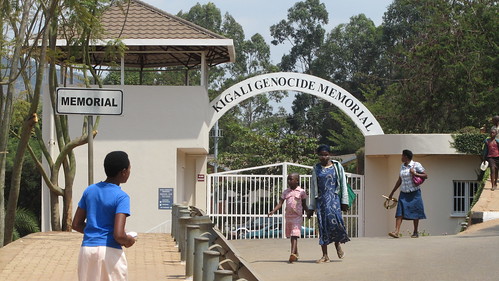
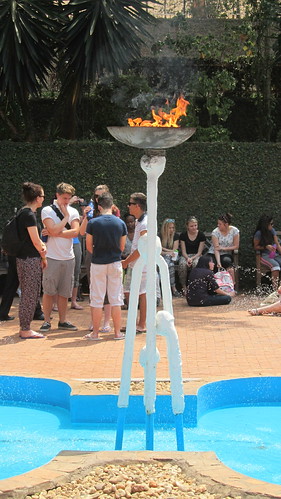
Since we were there during the 90 days of remembrance (the 3 months where the genocide was taking place), the torch was lit in the courtyard.
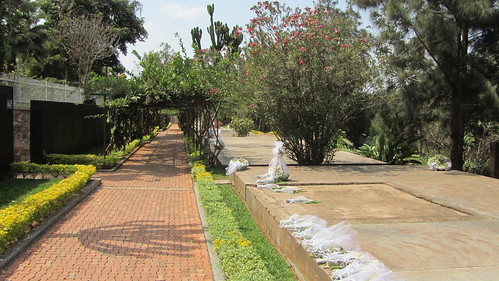
The mass graves outside are surrounded by very pretty gardens. The graves had a lot of flower baskets on them, which had been placed by people visiting to pay their respects.
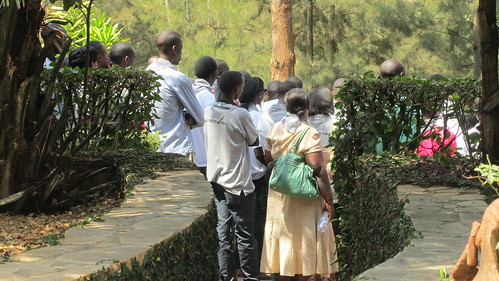
At each site we went to there were always groups of people from churches or various businesses who had come to visit and pay their respects. This church group stood by the mass grave and sang songs and hymnals. It was very moving.
Just like in all the memorial sites, we couldn't take pictures inside the buildings. But the museum was really well done and I think they did a good job of giving the details and documenting what happened.
Rwanda is more than just a country where atrocious things happened and soon I'll be writing a post about the beauty of the country and its animals. But, again, it's important that we understand what happened here and work to prevent future (and stop current) atrocities.
*Random side note, if you know us well, you might find it odd that dad's wearing what is obviously Chris's AmeriCorps sweatshirt (Yes, he still wears it!). For 5 days dad and Holly's luggage was delayed getting to Rwanda on their way from the US, so we had to help them out by lending them some of our clothes. They were troopers through the whole thing!
3 comments:
I am excited to catch up on your blog and look forward to future posts!!!!
Thanks Lizette! It's great to read your blog too and see what you're up to. Glad to be in touch again.
Simply astonishing and horrifying. Thank you for sharing. I agree that it important for us to be aware of such atrocities.
-Andy
Post a Comment